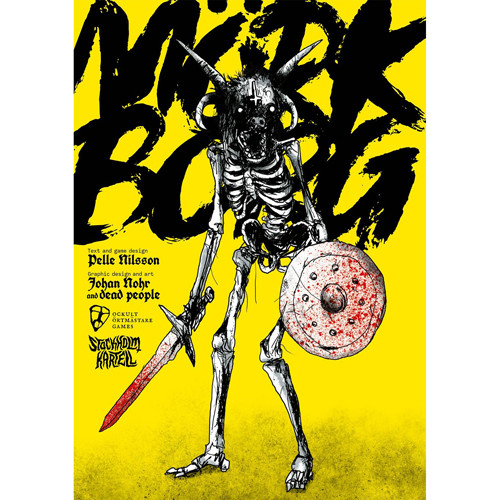I’m on a study project to improve my understanding of roleplaying games. To this end, I already have two reading projects, A Game Per Year and An Adventure Per Year. This is the third, with the goal of reading or playing 52 games made in the last few years. Originally I considered making this “A New RPG Per Week” and that’s where the number 52 comes from, even though a weekly schedule is probably not within my abilities.

Mörk Borg is a Swedish OSR-style game that’s one of the best examples of a comprehensive visual presentation in the game book which combines text, system design and graphic elements into one compelling whole. Built on doom metal aesthetics, the game cranks the misery of living in a mordantly awful world into the max. The player characters have no other choice in their hunger and desperation than to turn to life-threatening dungeon adventures.
OSR-style mechanics are easy to approach for anyone familiar with the older editions of D&D, especially simpler versions like the red box I started my roleplaying with. The implementation here is sparse and effective, the minimum you need to get off the ground and into pushing your character into lethal scenarios.
This is not the only OSR game I’ve seen that features a horror aesthetic and a world that doesn’t feel like a particularly nice place to live. Still, here the misery has been cranked as far as it can go, making the whole game feel more like the liner notes of a metal album than a traditional text-heavy roleplaying game book.
The approach where mood is everything crystallizes in the map where areas like Bergen Chrypt seem more like meatgrinders to chew up characters than actual geographical locations that would together make up a world. Another telling detail is the result in the “Corpse Plundering” table which says: “The remains of something worthless crumble in your hands.”
The most striking game mechanical feature to govern the world of the game is The Calendar of Nechrubel. Each dawn, the GM will roll a die. If the result is one, a Misery activates, for a random period of time such as “a bleak half-year” or “a cruel month”. The seventh Misery is always the death of the world.
The miseries of the Calendar of Nechrubel are permanent. The given time periods are estimates of how much suffering there is left before the world finally ends, based on which die the group chooses to roll for this purpose.